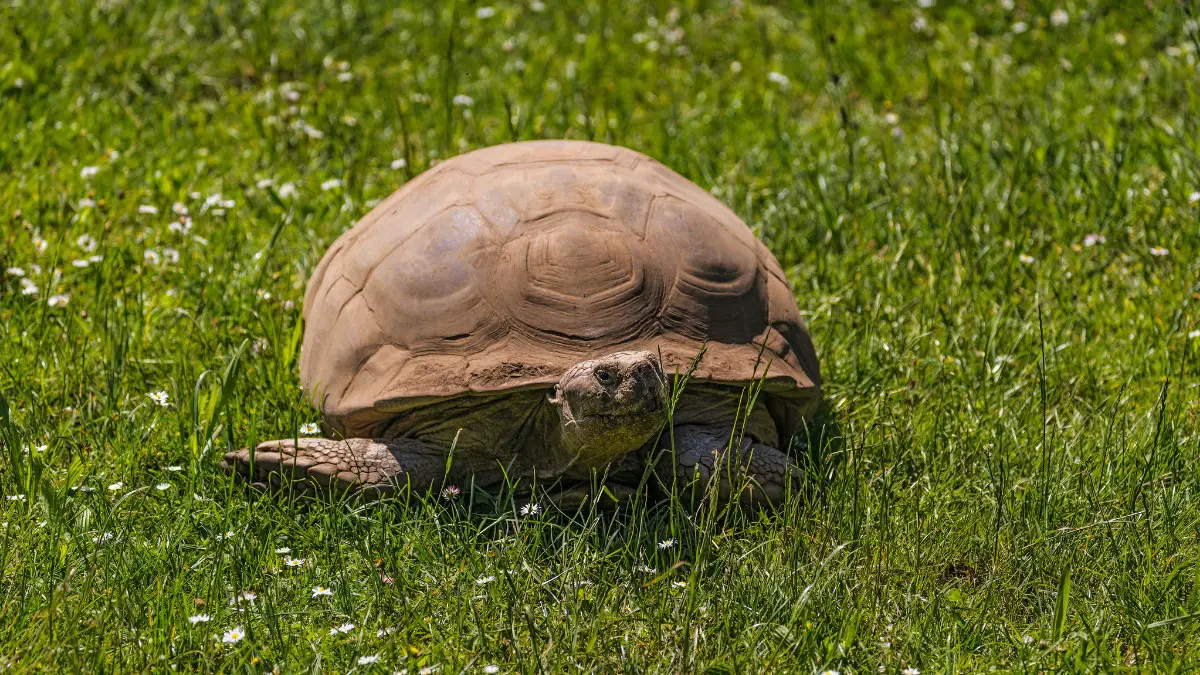Dying Tortoise? Watch Out for These Signs a Tortoise is Dying
Did you know that tortoises can live for up to 150 years? That’s longer than the lifespan of many humans! But just like us, these creatures are vulnerable to illness and disease – and sometimes, they pass away.
So, what are the signs a tortoise is dying? While there’s no single answer to this question, several symptoms could indicate a serious health issue. These include loss of appetite and energy and changes in breathing. They will also have physical abnormalities such as discoloration of their shell and abnormal vocalizations.
This article will break down each symptom and provide actionable tips for responding. We’ll also explore the most common causes of tortoise death and much more.
Common Signs a Tortoise is Dying
Contents
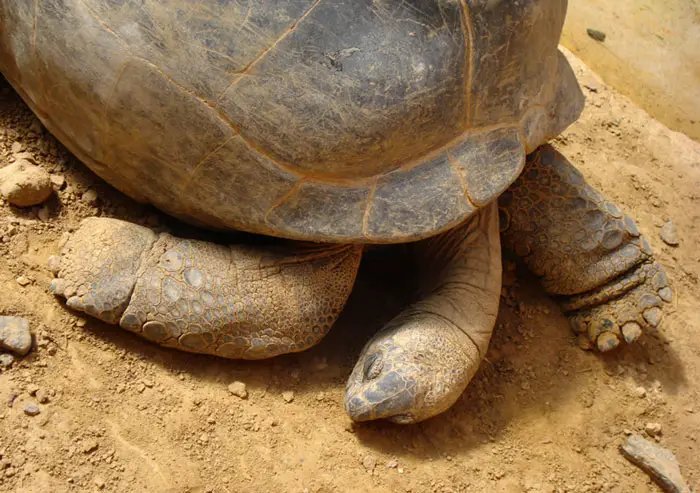
Here are some telltale signs your tortoise is dying:
1. Loss of Appetite
If your tortoise is not showing interest in food or not eating as much as they normally do, it could be a sign that they are feeling unwell.
In some cases, the loss of appetite may be temporary and could be caused by environmental changes, such as a new location or recent diet change.
A healthy tortoise should have a strong appetite and show interest in their food.
2. Lethargy or Lack of Energy
When a tortoise is lethargic, they have little energy or enthusiasm to move or engage in any activity. Your tortoise may also appear sleepy or drowsy with their eyes closed for extended periods. If your shelled friend is sleeping too much or not responding to stimuli, it is slowly dying.
3. Difficulty Breathing
This causes serious distress in a tortoise. You may notice your tortoise’s breathing rate is abnormally high, or they may struggle to breathe altogether.
Thus, they may appear gasping for air, wheezing or making strange noises as they breathe.
The tortoise may also exhibit physical signs of difficulty breathing, such as flared nostrils, heaving chest, and open mouth breathing.
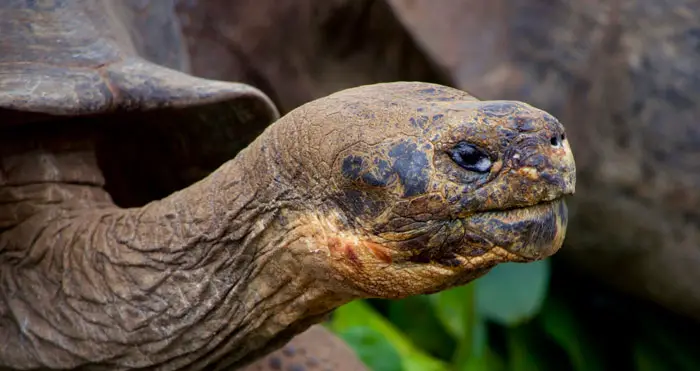
4. Discoloration or Lesions on the Skin
This can manifest as changes in color, texture, or appearance of the skin. The discoloration may appear as patches or spots darker or lighter than the surrounding skin. Lesions may appear as raised or sunken areas, scabs, or sores.
5. Dehydration
Signs of dehydration may include
- Sunken eyes
- Dry mouth and nostrils
- Wrinkled skin
- Lethargy
In some cases, the tortoise may also display increased thirst, constantly seeking out water sources or appearing overly eager to drink.
Tortoises are naturally adapted to living in dry environments. So, they may not display the same signs of thirst as other animals. We recommend closely monitoring their hydration level and water intake habits.
6. Vocalization and Excessive Hissing
Tortoises are typically quiet creatures and do not make much noise. So if you notice your tortoise making unusual vocalizations or hissing, it is a sign of distress or discomfort.
Vocalizations may include groaning, whimpering, or even screaming. But not all are signs of a dying tortoise.
If they persist and are accompanied by other signs of illness, your tortoise prepares to retire into the shell for good.
What Causes Death in Tortoise?
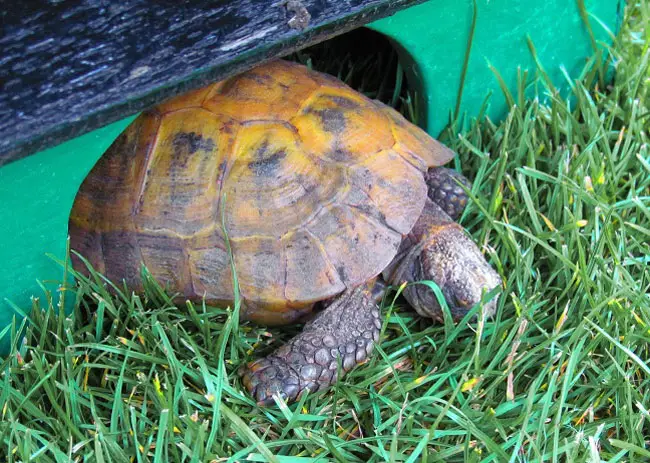
Here is why your tortoise has the signs of dying:
1. Old Age
Just like any other living organism, tortoises have a natural lifespan that they eventually reach. A tortoise can live for more than 100 years.
As they age, their organs deteriorate, and their body functions slow down. This natural process can lead to death.
2. Injuries or Trauma
Predators, such as dogs or birds of prey can injure these shelled reptiles. They can even acquire injuries from accidents like falling from a high surface.
Injuries to their internal organs or shell can be fatal. Even minor injuries can cause infections that can lead to death.
3. Infections or Diseases
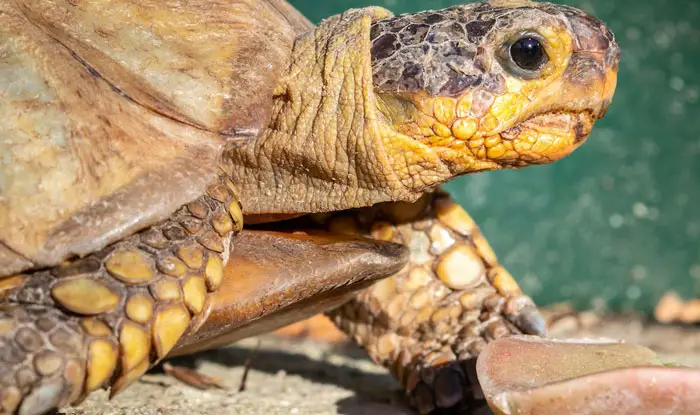
Tortoises are susceptible to various infections and diseases, such as
- Respiratory infections
- Eye infections
- Shell rot
- Chronic diseases like kidney disease and so on
Bacteria, viruses, or fungi cause some of these conditions and are fatal if not treated promptly. Turtles in crowded and unsanitary conditions are at higher risk of contracting infections and diseases.
4. Parasites
Parasites can cause various issues, such as damage to the internal organs, weakening of the immune system, and malnutrition. Some parasites, such as worms, can cause digestive tract blockages, leading to impaction and death.
Furthermore, parasitic infections can also lead to secondary infections or diseases, such as respiratory infections or pneumonia.
In severe cases, the tortoise may become severely weakened and unable to move, leading to dehydration, starvation, and eventual death.
5. Poor Nutrition
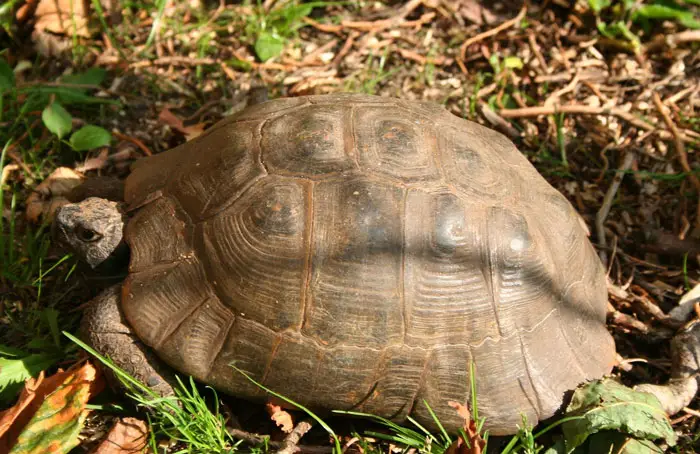
A lack of proper nutrition can lead to a weakened immune system, making the tortoise more susceptible to infections and diseases. It can also lead to
- Growth problems
- Bone deformities
- Metabolic disorders
For example, calcium deficiency can cause metabolic bone disease, affecting the tortoise’s shell. This will lead to a soft, pliable shell more susceptible to fractures and infections.
6. Genetics
Genetics will play a role in the death of a turtle through inherited health conditions or predispositions to certain diseases. Like in humans, certain genes can be passed down from the parents to the offspring.
Some genes can result in health issues or a weakened immune system. For example, some breeds are more prone to developing respiratory infections or shell rot due to genetic predispositions.
7. Toxicity
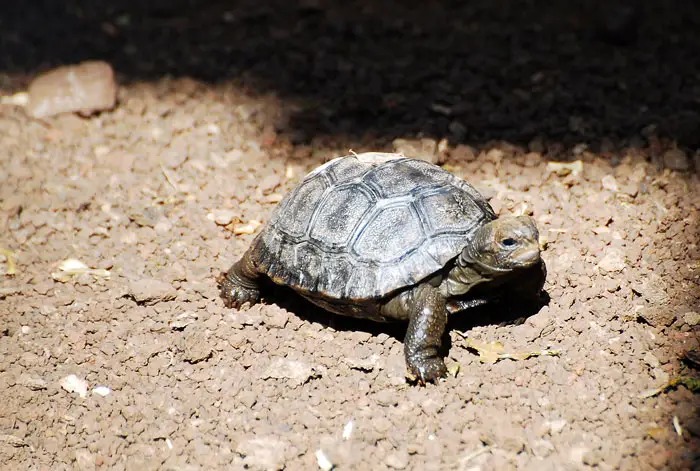
Exposure to harmful substances that can cause damage to their body systems will lead to death. Tortoises may accidentally ingest toxins from the environment or through their food.
The ingested toxins will affect various organs and systems in a tortoise’s body, such as the liver, kidneys, and gastrointestinal tract. These organs are responsible for filtering out harmful substances and waste products.
But excessive exposure to toxins can overload them and cause them to malfunction.
8. Egg Binding
This is a condition where a female tortoise cannot pass an egg formed in her reproductive tract. It occurs for various reasons, such as inadequate calcium levels, lack of exercise, or other health issues.
Egg binding in tortoises can be a life-threatening condition if not treated promptly. The stuck egg leads to an obstruction in the passage and puts pressure on the surrounding organs.
If left untreated, there will be development of secondary infections and other complications that can be fatal.
What to Do if You Suspect Your Tortoise is Dying?
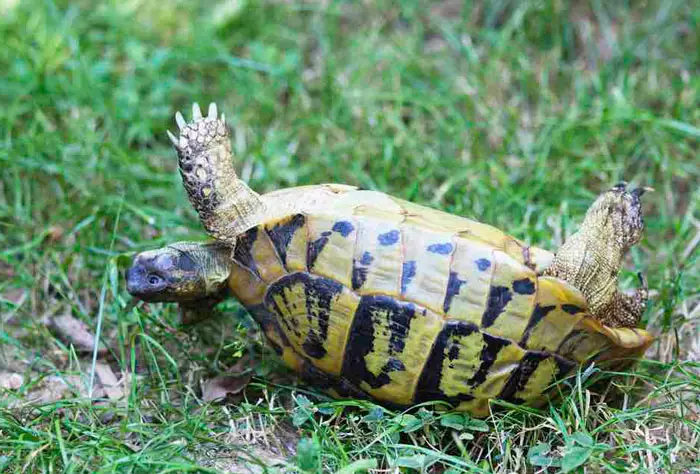
If your shelled friend is approaching the light at the end of the tunnel, you can do the following to help them:
1. Seek Veterinary Assistance Immediately
The first and most important step is to seek veterinary assistance immediately. Delaying this crucial step could result in your tortoise’s death or worsen its condition.
2. Provide a Warm and Quiet Environment
This will help reduce stress and make your tortoise feel more comfortable during its last moments. You can provide a heat lamp or a heat mat to do so. Ensure the temperature is not too hot or cold, as this can also be stressful for your tortoise.
You can also cover the enclosure with a blanket to create a cozy and quiet atmosphere.
3. Offer Water and Encourage Hydration
Dehydration is a common issue in sick or dying tortoises. Providing water can help alleviate some symptoms and make the animal more comfortable.
But ensure the water is fresh, clean, and easily accessible to the tortoise. If the turtle is too weak to drink on their own, gently syringe or dropper-feed them small amounts of water.
4. Minimize Handling and Stress
Avoid any sudden or drastic changes in the environment, such as moving the tortoise to a new location or exposing it to extreme temperatures. By doing this, you can help to reduce the burden on the tortoise’s body.
Allow it to conserve its energy and focus on its recovery or, in the worst-case scenario, on a peaceful passing.
What to Do with a Dead Tortoise?
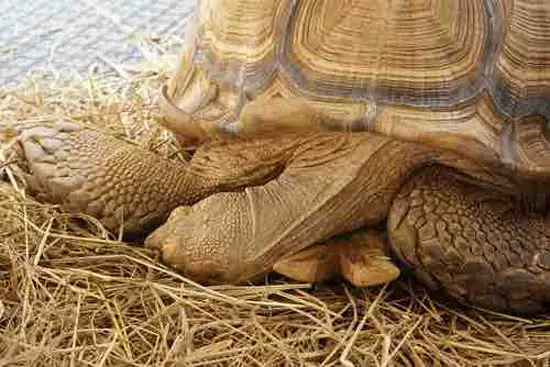
Losing a pet is never easy, but knowing how to handle the remains of a deceased tortoise properly is essential. Here are some steps to take if you find yourself in this situation:
- Confirm that your tortoise has passed away: Before taking action, ensure that your shelled friend is deceased. Check for signs of breathing or a heartbeat. If there is no response, your tortoise has likely passed away.
- Remove the tortoise from its enclosure: If possible, wear gloves to avoid any potential exposure to bacteria or other harmful substances.
- Decide on the final resting place: Burial is a common option, but check your local pet burial regulations. Cremation is also an option but can be more costly.
- Bury the tortoise: If you have chosen to bury your tortoise, dig a deep hole to cover the tortoise’s remains fully. Place the tortoise in the hole and cover it with dirt.
FAQs
Here are answers to some of the questions that may come up:
While loneliness may not directly cause death in a tortoise, it can lead to stress and a decreased quality of life. Tortoises are social animals and benefit from interaction with others of their own species.
No. But this can lead to health issues such as obesity and digestive problems. These issues can lead to a higher risk of other health problems and a shortened lifespan.
Yes. Provide a suitable habitat that meets their specific needs. This includes providing the right temperature, humidity, lighting, and a varied and balanced diet.
Ensure it has access to fresh water and is not exposed to potential hazards such as predators or toxic plants. Regular veterinary check-ups can also help identify any potential health issues early on.
Conclusion
Recognizing the signs a tortoise is dying is crucial in ensuring your pet receives proper care during its last days. These signs will vary depending on the cause of the illness or injury. So, it is always best to consult a veterinarian for a proper diagnosis and treatment plan.
Remember, dying is a natural part of the life cycle. While it may be difficult to say goodbye, you should focus on providing them love and comfort in their final days.

